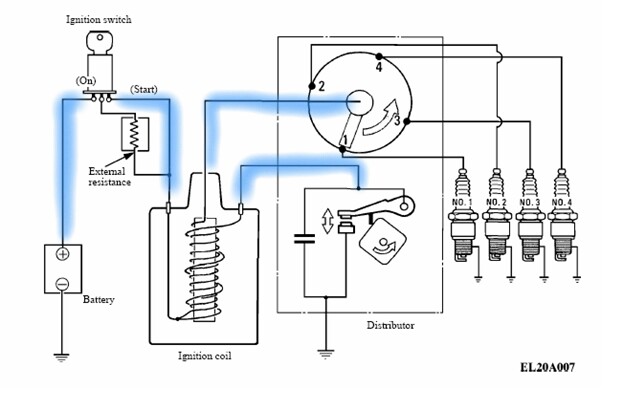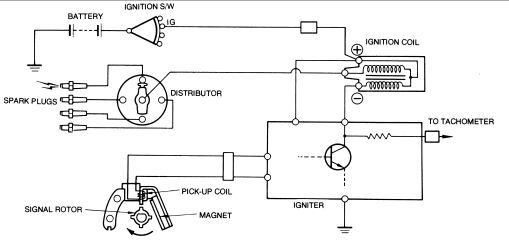4 Types of Car Ignition System and The Explanation
Kinds of ignition systems - Have you ever wondered why spark
plugs can fire? maybe some of you already know that the spark plugs actually do
not fire but sprinkle electrical energy. However, from where high voltage
electrical energy from ? like a fire tunnel?
We know, the vehicle's electrical system uses a battery with
12 volt power. This amount of voltage is certainly not going to issue a
displacement in the gap of 0.8 mm. For that there is a series of electrical
voltage increase for electricity to be able to get out of spark plug
electrodes in the form of sparks.
This circuit, called the ignition system circuit. There are
about 4 types of ignition on the vehicle, among others;
- Conventional ignition system
- Ignition system transistor (electronic)
- CDI ignition system (Motorcycle)
- DLI (Distributor less ignition) system
What does that mean? what is the difference? and how does it
work? can you see everything in the article below.
Types of Ignition System

1. Conventional Ignition System
Conventional ignition system is a series of ignition with
its performance mechanically. Why is it called mechanically? because in the
case of changing the voltage done mechanically by deciding the primary current
coil using pont contact.
This point contact is also called as platinum because the
end of this point made from platinum. Platinum, normally connected to the
mass, but if the platinum foot exposed to the cam then the contact will be
disconnected. This breaking of platinum contact used to increase the primary stress
by means of electromagnetic induction.
In addition, to split the spark where live also used
mechanical systems using the help of rotor and distributor. This distributor
connected to the crankshaft so that when the distributor rotor rotates then the
induced voltage distributed to all spark plugs as per the fairing order.
Although using a mechanical system, conventional ignition
type is the basis of the creation of a modern ignition system. Currently, it is
very rare to find cars with this system because in terms of electrical
efficiency lost to modern ignition.

2. Ignition System Transistor
The ignition system of a transistor becomes an ignition
scheme with an electronic component, but there are still some mechanical
components. The transistor ignition system is an electrical circuit that uses a
transistor as the primary current circuit breaker.
In principle, the system is the same as a conventional
system except that the output of the coil primer coil connected to a transistor
as an electronic switch. As for dividing the voltage, distributor components
are still provided.
There are two kinds of ignition ie transistors
- The semi-transistor type, still using the point contact that used as the base current breaker on the leg of the transistor.
- The fully transistor type, full transistor type uses a signal generator that replaces the contact point. The use of this signal generator does not cause friction because it works magnetically

3. CDI ignition system
The next ignition system is more applied to motorcycles. CDI
Ignition uses a capacitor that can store and expel all current quickly.
The way CDI works starts when the magnet produces a current
when the engine crank spins. The resulting current in the form of AC will be
channeled into the capacitor unit so that its current can absorbed. On the
other hand there is a pulser that will decide the ignition
timing based on magnetism.
When the pulsar sends a trigger the capacitor will discharge
the entire electric current to the primary coil. Inside the coil the electric
voltage magnified again so as to fire the spark plug. More
details can you refer to the workings of CDI motor ignition.

4. DLI ignition system
DLI stands for less ignition distributor. As the name
implies, this system does not use a distributor part. So, how is its
performance?
DLI is widely applied to modern cars, usually using
dual coil pack or single coil pack. In other words, every spark plug served by
a coil, so one coil will only increase the voltage for one spark plug.
In this case, we have an example, on a 4-cylinder
engine there are 4 inputs each of which will give commands when the
coil will work. This input generated by ECM with the help of CKP,
CMP and some other sensors.
In single coil pack type, the exist of spark
plug wires is also eliminated because the coil output will be directly
channeled through per to the spark plug, surely this increases the efficiency
of electrical energy distribution. To learn the DLI you can see how
the DLI ignition works
Similarly complete articles and details about the kinds of
ignition systems on cars and motorcycles, hopefully can add our insight and
useful for us all.


